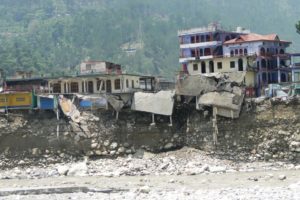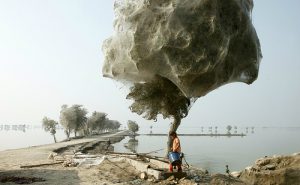An oil spill in the fragile Amazon rainforest is now threatening to cross its second international border. The spill began on May 31 when heavy rains triggered a landslide that ruptured the Trans-Ecuadorian Oil Pipeline, operated by Ecuador’s national oil company, Petroecuador in the foothills of the Andes near the active Reventador Volcano. Most of Ecuador’s 500,000 barrels a day of crude oil is pumped through the pipeline for export to the US and China.
An estimated 11,000 barrels or 420,000 gallons of oil – nearly equivalent to a full day’s production for Ecuador – were released into the Coca River. The river is a tributary of the Napo River, which in turn is a tributary of the Amazon. By last week, the oil spill had contaminated drinking water for Coca, a city of 80,000 people, and reached Ecuador’s neighbour, Peru.
It now continues downstream towards Brazil, causing concern among environmentalists and diplomatic embarrassment for Ecuador. Peru is assessing the damage and may demand compensation, while Brazil has offered aid to both countries to help contain the damage. The oil company is distributing drinking water and food supplies to affected communities.
This is not the first conflict Ecuador has suffered between the economic importance of an industry that supplies half of the country’s export earnings and the need to protect the Amazon environment. A long running law suit between environmental groups and the US oil company Chevron for the dumping of some 18 billion gallons of oil extraction waste into Ecuador’s lowlands from 1964 through 1992 remains unresolved.
The guilty company was another US oil company, Texaco, which merged with Chevron in 2001, although an Ecuadorean court ruled against Chevron in 2011, the company has refused to pay the $18 billion in damages the court ordered.
The now polluted Napo River runs close to Ecuador’s Yasuni Park, a UNESCO biosphere reserve that also contains an estimated 20 per cent of Ecuador’s oil reserves. In 2007, the then recently elected President Correa made a revolutionary and imaginative promise: to leave the reserves unexploited in return for compensation to half the estimated $7 billion value of the oil, to be paid over 13 years by international donors. He promised to use the money on social programmes, renewable energy and the protection of ecosystems.




